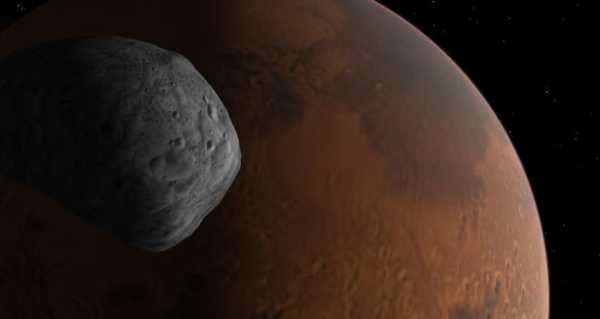
MOSCOW (Sputnik) – The joint Russian-European Mars orbiter ExoMars-2016 has detected hydrogen chloride in the red planet’s atmosphere for the first time, pointing to unknown chemical processes, space agency Roscosmos said Thursday.
In an article titled “The Salty Winds of Mars”, Roscosmos said that its Atmospheric Chemistry Suite spectrometer aboard the ExoMars orbiter directly measured the halide element while analysing the makeup of dust storms, which highlight the need for more study of chemical interactions between the planet’s surface and its atmosphere.

Mars
The hydrogen chloride was detected in minuscule amounts in the clouds of dust storms and disappeared after the storms settled. The element is a reactive acid that most commonly appears as a result of reactions with sulfur and was previously found only on Earth and Venus as a result of volcanic activity.
Korablev said the first indications point to hydrogen chloride acid present in Mars’ soil in chemical bonds but gets whipped up during massive dust storms and broken down into its gas form by lightning.
Traces of hydrogen chloride exist in the earth’s atmosphere, primarily coming as a result of sunlight reactions with salt on the oceans’ surface. The earth’s supply is believed to come from prehistoric volcanic activity and rarely exists in its pure form. It is more present in the atmosphere of Venus, where reactions between carbon dioxide and sulfur, under the influence of sunlight, continuously recycle the element, the article explained.

This image provided by NASA, assembled from a series of January 2018 photos made by the Mars Curiosity rover, shows an uphill view of Mount Sharp, which Curiosity has been climbing.
According to the hypotheses posed in Korablev’s paper, Roscosmos reported, its presence on Mars may come as a result of past volcanoes or current seismic activity. Another hypothesis points to a more elaborate water cycle on the planet than previously thought. Both suggest there is much to learn about the nature of Mars’ atmosphere.
The team behind the paper is looking at another set of data to corroborate the findings.
The ExoMars mission is set for the second leg of its joint European-Russian mission in 2022, aiming to put two rovers on the planet’s surface.
Sourse: sputniknews.com






